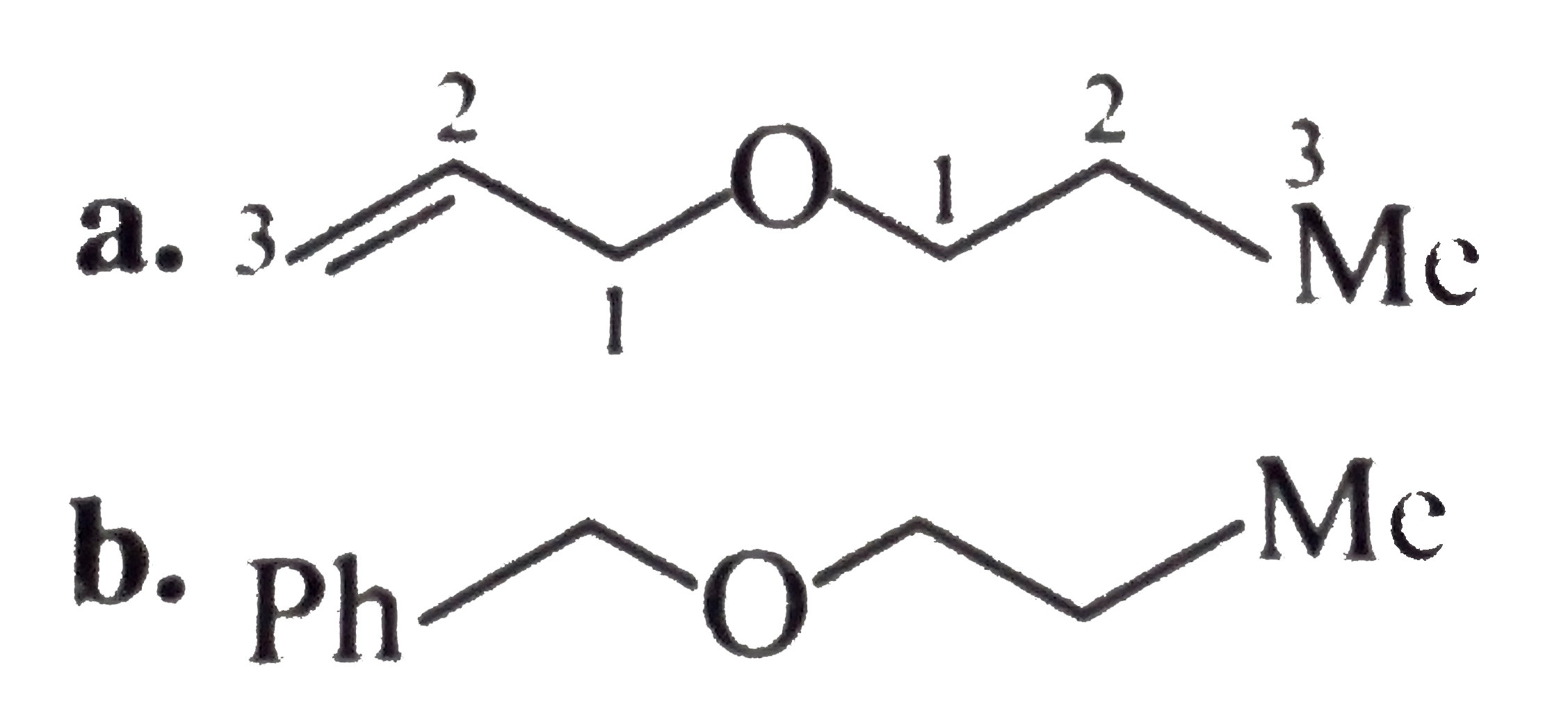Statement-I: Ethers o reaction with air and light form hydroperoxides. These peroxides decompose vilently at high temperature. Allyln-n-propyl ether with in lgiht gives mainly l-hydroperoxide allyl-n-propyl ether
Statement-II: The reaction proceeds via the formation of radical anion.
If both statement-I & statement-II are true & the statement-II is a correct explanation of the statement-I
if both statement-I & statement-II are true but statement-II is not a correct explanation of the statement-I
If statement-I is true but the statement-II is false.
If statement-I is false but the statement-II is true.
The correct Answer is:C
Topper's Solved these Questions
- ALCOHOL, ETHERS & PHENOL, OXIDATION & REDUCTION Book:BANSALChapter:ALCOHOL, ETHERS & PHENOL, OXIDATION & REDUCTION Exercise:Exercise 3
Explore 28 Videos
- ALCOHOL, ETHERS & PHENOL, OXIDATION & REDUCTION Book:BANSALChapter:ALCOHOL, ETHERS & PHENOL, OXIDATION & REDUCTION Exercise:Exercise 1
Explore 86 Videos
- CARBOXYLIC ACID DERIVATIVESBook:BANSALChapter:CARBOXYLIC ACID DERIVATIVESExercise:Exercise 3
Explore 23 Videos
Similar Questions
i. Given the mechanism for the formation of following hydroperoxide..

ii. Give the productus of the following ethers with O2 in light.
a. (Allyl-n-propyl ether) (Benzyl-n-propyl ether)
(Allyl-n-propyl ether) (Benzyl-n-propyl ether)
View SolutionStatement-I : Chlorination of ethyl benzene with Cl2 in presence of heat and light mainly yield 1-chloro-1-phenyl ethane as major product.
Because
Statement-II : The reaction oC Curs through intermediate formation of the radical C6H5CH−CH3.
View Solution
Knowledge Check
Which or the following is correct for the first order reaction ?
2N2O5(g)→4NO2(g)+O2(g)
(i) The concentration of the reactant decreases exponentially with time.
(ii) The half life of the reaction decreases with increaseing temperature.
(iii) The half life of the reaction depends on the initial concentration of the reactant.
(iv) The reaction proceeds to 99.6% completion in eigth half-life duration.A(i), (ii), (iv)B(i), (iv)Conly (iv)Dinly (i)Statement I : Colour of nitrogen dioxide changes to colourless at low temperature
Statement II : At low temperature Nitrogen tetroxide (N2O4) is formed which is colourless.ABoth the statements individually true and Statement II is the correct explanation of Statement I.BBoth the statements are individually true but Statement II is not correct explanation of Statement I.CStatement I is true but Statement II is false .DStatement I is false but Statement II is true .
Statement 1: The product formed is (B).
Statement 2: The reaction proceeds via the formation of the following species in the order: Radical anion → Vinylic anion → Vinylic redical → ProductAa.Statement 1 and Statement 2 are true and Statement 2 is the correct explanation of Statement 1.Bb.Statement 1 and Statement 2 are true and Statement 2 is not the correct explanation of Statement 1.Cc.Statement 1 is true and statement 2 is false.Dd.Statement 1 is false and statement 2 is false

Statement 1: The product formed is (B).
Statement 2: The reaction proceeds via the formation of the following species in the order: Radical anion → Vinylic anion → Vinylic redical → Product
View SolutionAlkenes can be oxidized in presence of different reagents to give different products. Alkenes on oxidation in presence of silver at high temperature give cyclic ethers, which also can be synthesized by using per acids. Alkenes on reductive ozonolysis give carbonyl compounds in presence of zinc and peroxide. On reaction with acidic KMnO4, it also produces corresponding carbonyl compound. Alkynes can also be oxidized in presence of such reagents but the products are different.
Cyclohexene is allowed to react with ozone and subsequently with H2O2 and water. The product formed is
View SolutionAlkenes can be oxidized in presence of different reagents to give different products. Alkenes on oxidation in presence of silver at high temperature give cyclic ethers, which also can be synthesized by using per acids. Alkenes on reductive ozonolysis give carbonyl compounds in presence of zinc and peroxide. On reaction with acidic KMnO4, it also produces corresponding carbonyl compound. Alkynes can also be oxidized in presence of such reagents but the products are different.
Ethane on reaction with MCPBA in CH2Cl2 forms a compound (A), which on reaction with CH2−Mgl and subsequent hydrolysis gives a compound (B). (A) and (B) are, respectively
View SolutionFree radical halogenation takes place in the presence of light or at high temperature (abov 773K.) Formation of halogen free radical intermediate takes place in first step called chain initiation step.
CI2hv−−→2CI
This reaction is mainly given by those compound which have atleast one hydrogen atom present at sp3−hybrid carbon.
Reactivity of sp3−hybrid carbon depends on the reactivity of reaction intermediate.
The relative rate of formation of alkyl radicals by a chlorine radical is :
Tertiary(5)>Secondary(3.8)>Primary(1)
Percentage yield of the prodcut =Relative amount×100Sum of relative amounts
Relative amount = Number of hydrogen atoms on the respective carbon × relative reactivity.
NBS (N-bromo succinimide) is used for bromination at allylic and benzylic carbon, whereas Br2/hv gives bromination at benzylic allylic and alkyl carbon.
CH3CH2CH2CH3+CI2hv−−−−−→Light
CH3O∣CHCH2CH32-Chlorobutane+CH3CH2CH2CI1-Chlorobutane
Percentage yield of 2-chlorobutane will be:
View SolutionStatement I: N2O is a better supporter of combustion as compared to air.
Statement II: N2O decomposes To (N2+1/2O2) which contains 33% as compared To 20% O2 in air
View Solution
